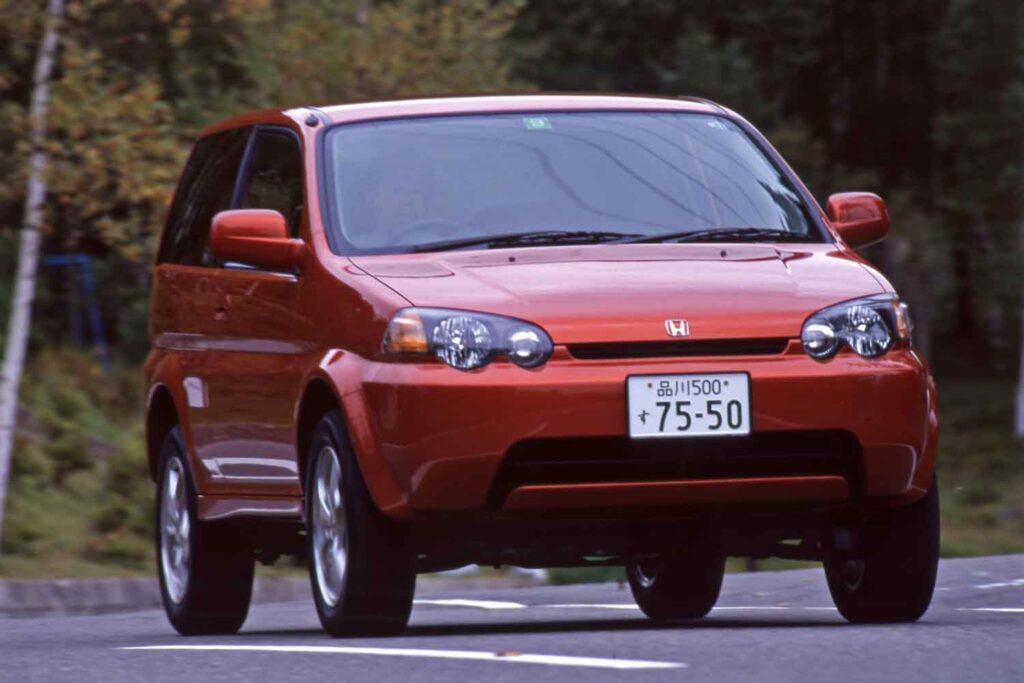Would it have been a great car if it had appeared a little later?
The Honda HR-V, introduced in 1998, is a crossover vehicle with a compact body that fits into the five-number size range. A 1.6-liter engine powered it and it was available with a five-speed manual transmission in addition to the Honda Multi Matic S, making it an attractive model.
A five-door model was available in addition to the three-door model
Honda’s line-up of crossover SUVs includes popular models such as the Vezel, ZR-V, and the recently launched WR-V, which matches the current popularity of crossover SUVs. Current crossover SUVs include both RV-derived and passenger car-derived models, but Honda’s pioneering passenger car-derived crossover SUV was the HR-V, which was introduced in 1998.
The HR-V, a production version of the J-WJ exhibited at the Tokyo Motor Show the previous year, was the second release (the first being the Capa) of the J (Joyful) Movers, a derivative of the Creative Movers that produced such hits as the Odyssey, Step Wagon, and CR-V.
At the time, the term ‘crossover SUV’ had not yet been coined, so the HR-V was introduced as an ‘urban-cool high-rider that was neither a wagon nor an XC vehicle’ and, like the Capa, used the ‘Logo’ platform. As the theme suggests, it was an unprecedented model with a three-door body that was neither wagon nor XC, large-diameter tires, and a high minimum ground clearance of 190 mm.
The entry-level 2WD model had the same front strut and rear axle suspension as the Logo, but the 4WD model had Honda’s signature dodion rear suspension and a 1.6-liter engine that was twice as large as the Logo. This engine was a SOHC D16A type, and while the standard model had 105 hp, the highest grade was equipped with a 125 hp version with VTEC, combined with a CVT called Multi Matic S.
Then, in July 1999, a user-friendly five-door model was added. This was not merely a three-door model converted into a five-door, but a well-crafted model with an extended wheelbase.
Although Honda also had a CR-V, no crossover model could be driven like a passenger car, so the HR-V became a hidden long-lived model. Despite a reduced model line-up, with the three-door model being dropped from the line-up in October 2003, production continued until around the end of 2005. Production continued until around the end of 2005.
Although no direct successor to the HR-V eventually appeared, the HR-V name has been revived as the name of the export version of the first-generation Vezel, which was introduced in 2013, and is also currently used for the Brazilian version of the second-generation Vezel and the North American version of the ZR-V.
The HR-V was not a big hit, as it was introduced before the term crossover SUV was coined, let alone the crossover SUV boom, but its concept was definitely in line with modern crossover SUVs. Considering its potential to become a long-selling model even at the time, it could well have become a rare blockbuster if it had been introduced a little later.
translated by DeepL
